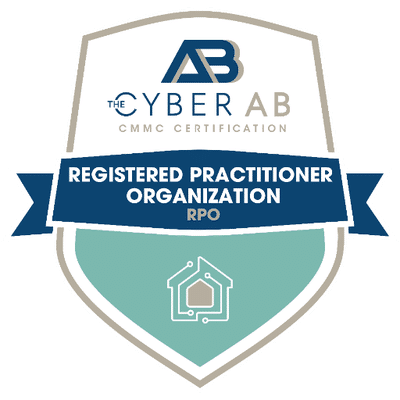If you’re only starting to look into getting FedRAMP compliance, this is the essential guide for you. Navigating the process can be intimidating, but so can, say, eating an elephant. So how exactly do you that? Well, you start by taking the first bite.
In this guide, we will help you:
-
Gain a clear understanding of FedRAMP authorization.
-
Understand what FedRAMP means for your cloud services.
-
Understand what it means for your cloud services to be adopted by federal agencies.
We’ll go into detail about:
-
The program’s requirements.
-
The authorization process.
-
And vital steps for maintaining compliance.
Ready? Let’s dive in.
Key Takeaways
What It Is: The Federal Risk and Authorization Management Program (FedRAMP) establishes a standardized approach for security and risk assessment, authorization, and continuous monitoring of cloud services used by federal agencies.This process involves the collaboration of key stakeholders including Cloud Service Providers (CSPs), federal agencies, and Third-Party Assessment Organizations (3PAOs).
-
The Process: CSPs are required to follow a rigorous compliance process that is based on the Risk Management Framework (RMF)(NIST SP 800-37). This process includes thorough documentation, security control evaluations aligned to NIST SP 800-53, Rev 5, 3PAO assessments of those controls, achievement of Authorization to Operate (ATO), and maintenance of that authorization through subsequent continuous monitoring and ongoing compliance activities.
-
FedRAMP Levels: Cloud systems and FedRAMP authorizations are categorized in accordance with the Federal Information and Processing Standards (FIPS) 199 into low, moderate, and high-impact levels, reflecting the stringency of required security controls relative to the sensitivity of federal data processed.
Ready to get your FedRAMP authorization? Get in touch with a security expert at 38North Security today.
Understanding FedRAMP: A Comprehensive Overview

Founded in 2011, the Federal Risk and Authorization Management Program, or FedRAMP, standardizes the assessment, authorization, and continuous monitoring of cloud services used by federal agencies.
Before FedRAMP, each federal agency had different security requirements that vendors had to meet. This made it difficult and expensive for the federal government as a whole to adopt secure cloud-based solutions.
FedRAMP was developed as a cost-effective, risk-based approach to the implementation of secure cloud services. The subsequent standards that FedRAMP created were then adopted by all federal agencies.
The development and establishment of FedRAMP standards were significantly shaped by the efforts of the Office of Management and Budget (OMB), the Joint Authorization Board (JAB) which is made up by the Department of Homeland Security (DHS), the Department of Defense (DOD), and the General Services Administration (GSA), and the FedRAMP Program Management Office (PMO).
In December 2022, the FedRAMP Authorization Act was signed as part of the 2023 National Defense Authorization Act (NDAA 2023). The Act codifies the FedRAMP program as the authoritative standardized approach to security assessment and authorization for cloud computing products and services that process unclassified federal information.
FedRAMP uses National Institute of Standards and Technology (NIST) standards and guidelines to provide standardized security requirements for cloud services; a conformity assessment program; standardized authorization packages and contract language; and a repository for authorization packages. FedRAMP developed and adopted uniform methods for assessing security and risk, providing several benefits to cloud service providers (CSPs) and Federal agencies that implement those services. These include:
-
Reducing duplicative efforts, inconsistencies, and cost inefficiencies.
-
Establishing a public-private partnership to promote innovation and the advancement of more secure information technologies.
-
Allowing the federal government to speed up the adoption of cloud computing. This is done by creating transparent standards and processes for security authorizations, and allowing agencies to leverage security authorizations on a government-wide scale.
Cloud service providers (CSPs), through their compliance with FedRAMP’s strict standards, demonstrate their commitment to securing federal data, thus enhancing their appeal to federal agencies.
Not only that: Having FedRAMP authorization also signals to the private sector that your products and services meet the highest possible standards in cloud security.
Navigating FedRAMP Compliance: Requirements and Procedures

To prepare for FedRAMP compliance, CSPs must meet specific requirements and adhere to procedures in a process that is quite rigorous. These steps include:
Implementation and comprehensive documentation of robust security controls for the cloud service offering (CSO).
-
This includes describing how the security controls are implemented in the System Security Plan, addressing all system and corporate policies and procedures, and documenting supplemental plans to address specific security functions as required.
-
Systematic assessment of security controls based on the NIST 800-53 guidelines with the help of Third-Party Assessment Organizations (3PAOs).
-
Supporting documentation and evidence is provided through the generation of a Security Assessment Report that outlines vulnerabilities, threats, and recommendations for mitigation.
-
Once all documentation is ready, CSPs can acquire FedRAMP authorization through one of two ways:
Agency Authorization, which results in an Agency’s Authorization to Operate (ATO)
-
CSPs will work with the Agency Authorizing Official (AO) to ensure that the implemented controls meet Federal standards and all Agency risk-based concerns.
-
The JAB Process, which leads to a Provisional Authorization to Operate (P-ATO).
-
CSPs with work with JAB Technical Reviewers on the review of all controls and supporting system documentation. Once complete a recommendation for authorization will be made to the CIOs at DHS, DOD, and GSA for final authorization.
-
Once authorized, the CSP will enter the Continuous Monitoring phase where they will maintain system compliance through regular scanning and documentation of ongoing risks on their Plan of Action & Milestones (POA&M), that identifies security vulnerabilities and key activities the CSPs plans to take to mitigate those. AOs use the POA&M and other vulnerability scans to assess the ongoing risk posture of the cloud system.
Ready to get FedRAMP-authorized? Get in touch with a security expert at 38North Security today.
Preparing for Compliance: Documentation and Templates
Thorough documentation is a prerequisite for preparing for FedRAMP compliance. The initial step in the FedRAMP authorization process involves compiling initial FedRAMP documents such as:
-
System Security Plan (SSP)
-
Security Policies and Procedures
-
Information System Contingency Plan (ISCP)
-
Configuration and Management Plan (CMP)
-
Incident Response Plan (IRP)
-
CIS and CRM Workbook
-
FIPS 199 Worksheet
-
Integrated Inventory Workbook
FedRAMP provides many templates for these documents and some can be found in the SSP itself. If a FedRAMP template is provided, CSPs must use that template when creating their documentation. These templates offer a structured framework for documenting security controls, vulnerabilities, and deficiencies, aiding in compliance preparation and help streamline the review process and increase consistency.
Assessing Security Controls: The Role of Third-Party Assessment Organizations (3PAOs)
The FedRAMP compliance process relies heavily on the involvement of third-party assessment organizations (3PAOs). They conduct both initial and periodic security assessments for CSPs seeking FedRAMP authorization, providing an impartial evaluation of their security controls.
A 3PAO readiness assessment is a comprehensive evaluation that:
-
Identifies any deficiencies that would be considered a showstopper for FedRAMP authorization.
-
Establishes a definitive understanding of the CSP’s security and risk position.
-
Identifies a CSPs process maturity and alignment to Federal mandates like FIPS 140-2 and DNSSEC.
Becoming a 3PAO for FedRAMP requires an organization to:
-
Have personnel with the requisite experience, training, and certification.
-
Undergo a hands-on proficiency exercise.
-
Participate in the Cybersecurity Inspection Body Program under American Association for Laboratory Accreditation (A2LA) for at least one year to validate their qualifications.
-
Adhere to quality, independence, and FedRAMP knowledge criteria during the initial security assessment.
-
Directly address specified requirements and inquiries while presenting observations and evidence.
-
Maintain compliance with FedRAMP standards for assessment under the R311
Achieving Authorization: Agency vs. JAB Process
After preparing the necessary documentation and assessing the security controls, CSPs can take the next step towards FedRAMP authorization either via the Agency Process or the JAB Process.
In the Agency Process, the CSP initiates a partnership with a designated federal agency, which remains involved throughout the process and, upon successful completion, grants an Authorization to Operate (ATO).
The JAB Process, on the other hand, encompasses a provisional authorization. The JAB selects a specific number of cloud services with the aim of granting a JAB Provisional Authority to Operate (P-ATO).
*We do have to note here that authorization paths are expected to change in 2024. While the Agency Path will remain, a new PMO Path will be established. We’re still waiting on the official announcement and what it entails, but expect an analysis from us when it comes out!
Maintaining FedRAMP Compliance: Continuous Monitoring and Risk Management

Rather than a one-time achievement, FedRAMP authorization is an ongoing commitment requiring persistent monitoring and risk management.
After obtaining formal authorization, organizations are required to undertake the continuous monitoring phase. This phase is essential for upholding authorization and ensuring sustained adherence to FedRAMP requirements.
During this phase, organizations may be required to provide evidence that certain key controls are operating effectively, typically on a monthly or annual basis. This can include activities such as vulnerability scanning and penetration testing.
Additionally, cloud service providers will be required to maintain operational visibility, report on significant changes to the system such as, changes in FIPS 199 categorization, new technology added inside or outside the authorization boundary, or new services, and respond to any incidents that may arise.
To enhance the manageability of the continuous monitoring phase, implementing automated controls and utilizing appropriate compliance and risk management technology is recommended that CSPs stay in constant communication with their AO(s) and stay apprised of all FedRAMP communications that are developed from the FedRAMP PMO.
Implementing Continuous Monitoring Programs
In order to maintain their compliance with FedRAMP requirements, it’s necessary for CSPs to establish continuous monitoring programs. These programs involve managing routine day-to-day changes through the CSP’s change management process, ensuring operational visibility, managing change control, and attending to incidents.
The essential elements of a FedRAMP continuous monitoring program consist of ongoing security assessments, analysis of continuous monitoring deliverables, and the identification and management of significant changes or critical vulnerabilities.
The frequency of continuous monitoring activities under FedRAMP may vary, but it is advisable for CSPs to establish measures, metrics, and status monitoring and control assessments frequencies in order to communicate organizational security status and detect changes.
Both the CSP and the Authorizing Official have key responsibilities in implementing and maintaining a continuous monitoring program in accordance with FedRAMP guidelines.
Responding to Security Incidents and Vulnerabilities
Maintenance of FedRAMP compliance necessitates the presence of a response plan for dealing with security incidents and vulnerabilities.
In accordance with FedRAMP, a Cloud Service Provider’s Incident Response Plan is required to meet agency-specific plans, effectively handle responses to security incidents, and include root cause analysis along with a resolution strategy.
The Incident Response Team plays a crucial role in handling these incidents and vulnerabilities, with duties encompassing detection, analysis, containment, eradication, and recovery from incidents, as well as coordinating with agency response teams.
Recommended best practices for addressing security incidents include establishing well-defined incident response procedures, promptly reporting incidents or suspicions, and providing sufficient response capabilities in accordance with FedRAMP requirements.
Additionally, managing vulnerabilities under FedRAMP entails conducting regular scans using a tool that updates its vulnerability database signatures at least on a monthly basis.
In a FedRAMP compliant organization, it is imperative to report all suspected and confirmed information security incidents to the relevant authorities to uphold transparency and efficacy in incident management.
FedRAMP Impact Levels: Low, Moderate, and High

FedRAMP compliance is categorized into three FIPS 199 impact levels – low, moderate, and high – each determining the necessary security controls for each level.
-
Low-impact compliance is characterized by the potential limited adverse effects on an agency’s operations, assets, or individuals in the event of loss of confidentiality, integrity, and availability.
-
Moderate-impact compliance is defined by the potential serious adverse effects on an agency’s operations, assets, or individuals due to the loss of confidentiality, integrity, and availability.
-
High-impact compliance, the highest level of security requirements and controls, is specifically designed for systems that handle sensitive and classified government information.
Comprehending these varying impact levels becomes vital for CSPs as they make their way towards achieving FedRAMP compliance. The level of impact determines the number of security controls a CSP must implement, the complexity of the compliance process, and the types of federal data the CSP can handle. In essence, the higher the impact level, the more stringent the security controls, and the more sensitive the data the CSP can handle.
Ready to get FedRAMP-certified? Get in touch with a security expert at 38North Security today.
Low-Impact Compliance
Low-impact compliance involves the least stringent security controls and is suitable for systems where the potential adverse effects are limited. This includes Tailored LI-SaaS Baseline and Low Baseline data, which is managed in compliance with the LI-SaaS Baseline specifically tailored for Low-Impact SaaS applications that do not retain personal identifiable information (PII) beyond the typically required data. The repercussions of a breach within the Low-Impact Compliance category in FedRAMP would lead to restricted adverse impacts on the confidentiality, integrity, and availability of data.
To ensure Low-Impact Compliance in FedRAMP, CSPs are recommended to:
-
Implement multi-agency continuous monitoring
-
Adhere to the LI-SaaS Baseline for Low-Impact SaaS applications
-
Utilize the mapping between the FedRAMP Low Baseline Controls and AWS managed Config rules for operational best practices.
Moderate-Impact Compliance
Moderate-impact compliance requires more stringent security controls than low-impact compliance and is suitable for systems where a breach could cause serious adverse effects on an agency’s operations, assets, or individuals.
Failure to meet the moderate-impact compliance standards in FedRAMP could result in substantial operational damage to agency assets, financial loss, or individual harm.
CSPs must adhere to a baseline of 323 security controls, a notably more rigorous requirement compared to 156 controls for low-level systems.
High-Impact Compliance
High-impact compliance, the highest level of FedRAMP compliance, requires the most stringent security controls and is suitable for systems handling the government’s most sensitive, unclassified data in cloud environments. This includes data in critical government sectors such as:
-
law enforcement
-
emergency services
-
financial systems
-
health systems
Compared to lower levels, high-impact compliance necessitates adherence to 410 security controls, a notably more rigorous requirement.
CSPs hoping to handle this type of sensitive data must be prepared to meet these strict security controls. These controls undergo thorough evaluation and enforcement to safeguard high-impact data in cloud services. This level of compliance demonstrates a CSP’s commitment to providing the highest level of security for federal data.
Learn more: Decoding FedRAMP Baselines: Get to Know Low, Moderate, and High Impact Levels for Compliance
Summary
In summary, the path to FedRAMP compliance involves a deep understanding of the program’s origins and key players, coupled with a thorough navigation of the requirements and procedures for compliance.
CSPs must implement continuous monitoring and risk management strategies to maintain their compliance status, and they must understand the different impact levels of compliance – low, moderate, and high.
The success stories of major CSPs like AWS, Google Workspace, and Zoom for Government serve as inspiration for other CSPs embarking on their own journey to compliance.
Remember, achieving FedRAMP compliance is not just a destination, but an ongoing journey of providing secure cloud services to federal agencies.
Start your FedRAMP authorization process. Get in touch with a security expert at 38North Security today.
Frequently Asked Questions
How much does FedRAMP certification cost?
The cost of FedRAMP certification varies based on the organization’s size and complexity, ranging from tens of thousands to millions of dollars, and the process can take several months to a year.
Is FedRAMP based on NIST 800-53?
Yes, FedRAMP uses NIST 800-53 rev 5 controls as the foundation for its security requirements and also relies on other NIST SP documents for risk management.
What is the difference between FIPS and FedRAMP?
The main difference between FIPS 199 and FedRAMP is that FIPS 199 provides guidance for federal agencies and contractors, whereas FedRAMP focuses on cloud service providers.
What is the FedRAMP marketplace?
The FedRAMP marketplace is a database of authorized cloud service providers used by government agencies to source cloud-based solutions. It lists providers that have achieved a FedRAMP designation and recognized auditors who can perform FedRAMP assessments.
What is the purpose of FedRAMP?
The purpose of FedRAMP is to standardize the evaluation, approval, and ongoing supervision of cloud services utilized by federal agencies. It is a government initiative.





